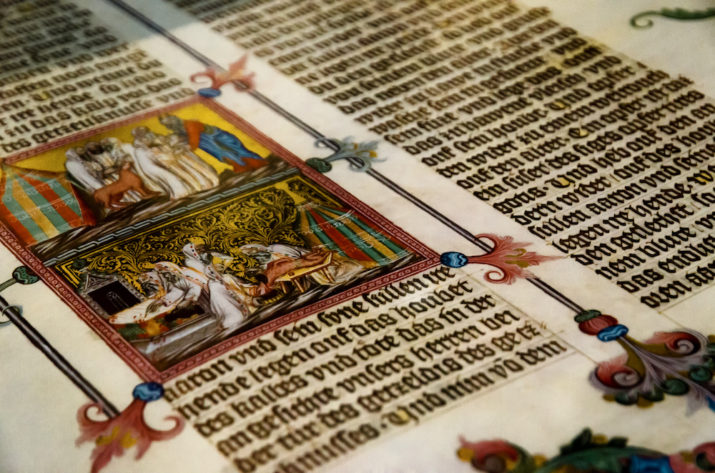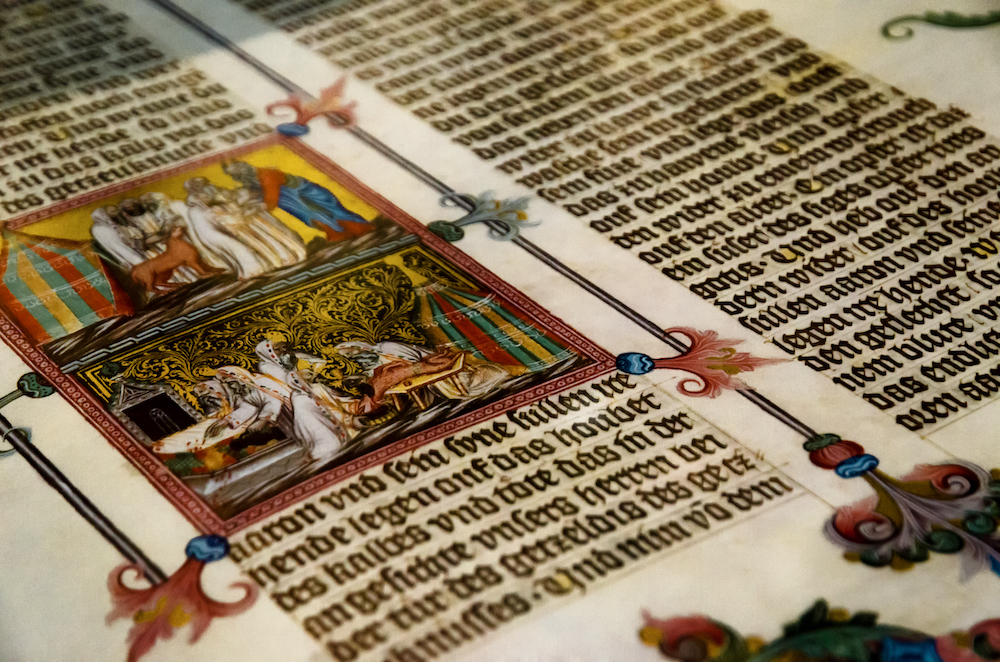

This is part of our Campus roundtable on Teaching Medieval in Modern Plague Times.
Yet research continues, and it continues to be fruitful, because historians are not passive instruments and because they read the same old documents with fresh eyes and with new questions in mind. — Georges Duby[1]
In our field inheres the ability to criticize modernity, to pick apart and expose the dynamics that make modernity comfortable and allow it to appear monolithic, to utterly annihilate narratives of interminable progress. — Cord Whitaker[2]
Course description
In diverse societies, people worked to understand their place in the world, and how they might best live in it. Many questions medieval people asked—for instance, how religious belief should relate to social order—are questions we are still asking and answering today. Through lectures, readings, and class discussion, we will explore topics in political, religious, social, economic, and gender history, among other subfields. Because our learning is a shared endeavor, you will be expected to attend and participate in class regularly. Although the course title is “Medieval Europe,” Europe was not culturally isolated (or indeed culturally monolithic) during this period, and so we will also consider other regions of the world, as well as the history of studying medieval Europe alone.
Medieval Europe: independent project guidelines and options
Option 1:
Research paper. This is the classic way of developing and presenting your own ideas on history, and interpretations of it.
Components
- Topic submission: This should include a working title and provide a paragraph-length summary of what you plan to investigate, and how. The more detail you provide, the more substantive feedback I will be able to offer.
- Abstract: Due two weeks later, an abstract of 300 words should describe concisely the topic, argument, and significance of your paper.
- Annotated bibliography. Also due on that date, consisting of a list of at least 5 sources, each with an annotation of approximately 100-150 words, describing the source’s content and relevance to your paper.
- Due in our final exam period: paper of 2500-3000 words (approximately 10-12 pages) in length. It should be organized around a strong, specific, contestable claim (your paper’s thesis.) Your argument would then be constructed using both primary and secondary sources, engaging both with medieval ideas, and with the work of other historians.
Option 2:
Pitch for an HBO show principally concerned with medieval European history.
Components:
- Topic submission (see details under Option 1.)
- Abstract (see details under Option 1.)
- Annotated bibliography (see details under Option 1.)
- Essay of 1200-1500 words in length. This should discuss, concisely, the premise and genre of the show, and the plot arc of the first season. The bulk of the essay should be devoted to the historical interest and relevance of the show, and any places in which the show diverges from the historical record. Footnotes should be used.
- Descriptions of 6 episodes, with titles. Each episode description should be ca. 200 words in length. A cast list is optional, but not required.
Option 3:
Pitch for a project using sources from medieval Europe, and/or raising awareness of medieval European history. This could take the form of, e.g., an installation in a museum or public space, a theatrical performance, or an educational initiative. This is not an exhaustive list; if you have another idea, discuss its potential with me in a timely manner.
Components
- Abstract (see details under Option 1.)
- Annotated bibliography (see details under Option 1.)
- Project proposal. This must include a description of how your project draws on medieval history, properly footnoted, and of ca. 1500 words in length. The remainder of the essay (1000-1200 words) should describe how the project is to be implemented (over time, if applicable,) who your intended audience is, and what the significance of your project is. Footnotes would also be appropriate here, to demonstrate e.g. the suitability of your chosen venue.
Lucy Barnhouse is an Assistant Professor at Arkansas State University. Her forthcoming monograph, Houses of God, Places for the Sick, examines hospitals as religious institutions in late medieval cities. She teaches a wide variety of courses in premodern history, and is a founding member of the Footnoting History podcast.
References:
[1] Georges Duby, History Continues, trans. Arthur Goldhammer (Chicago: University of Chicago Press, 1994), 44.
[2] Cord Whitaker, “Pale Like Me: Resistance, Assimilation, and ‘Pale Faces,’ Sixteen Years On,” In the Medieval Middle, http://www.inthemedievalmiddle.com/2016/07/pale-like-me-resistance-assimilation.html. Last accessed November 14, 2020.
Published on December 8, 2020.




